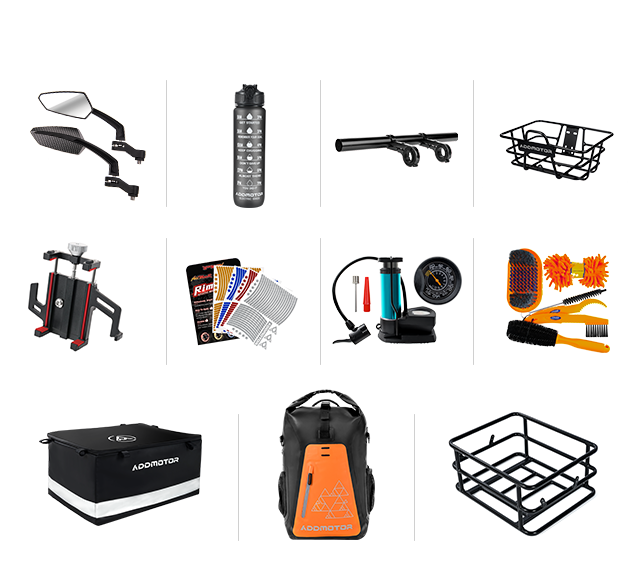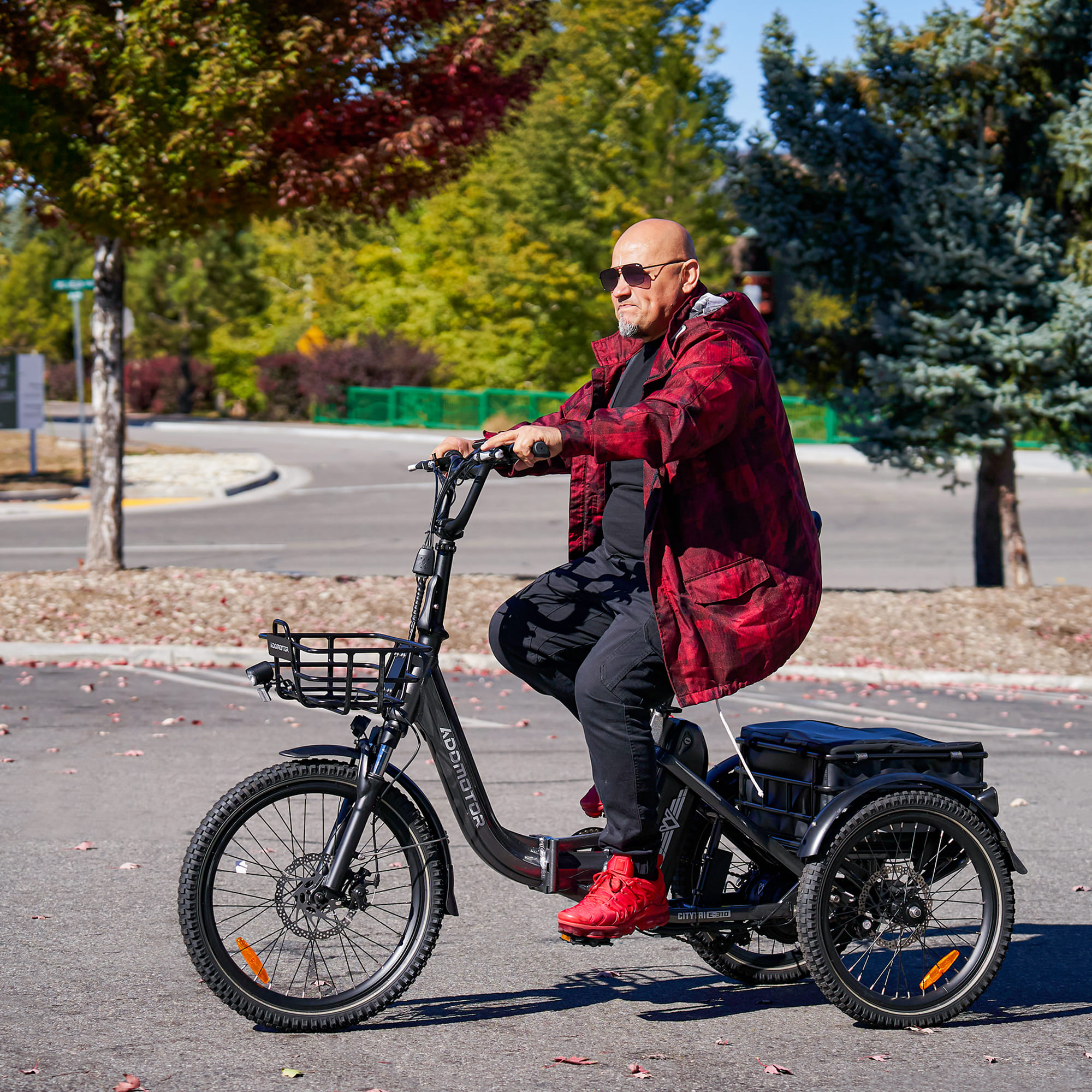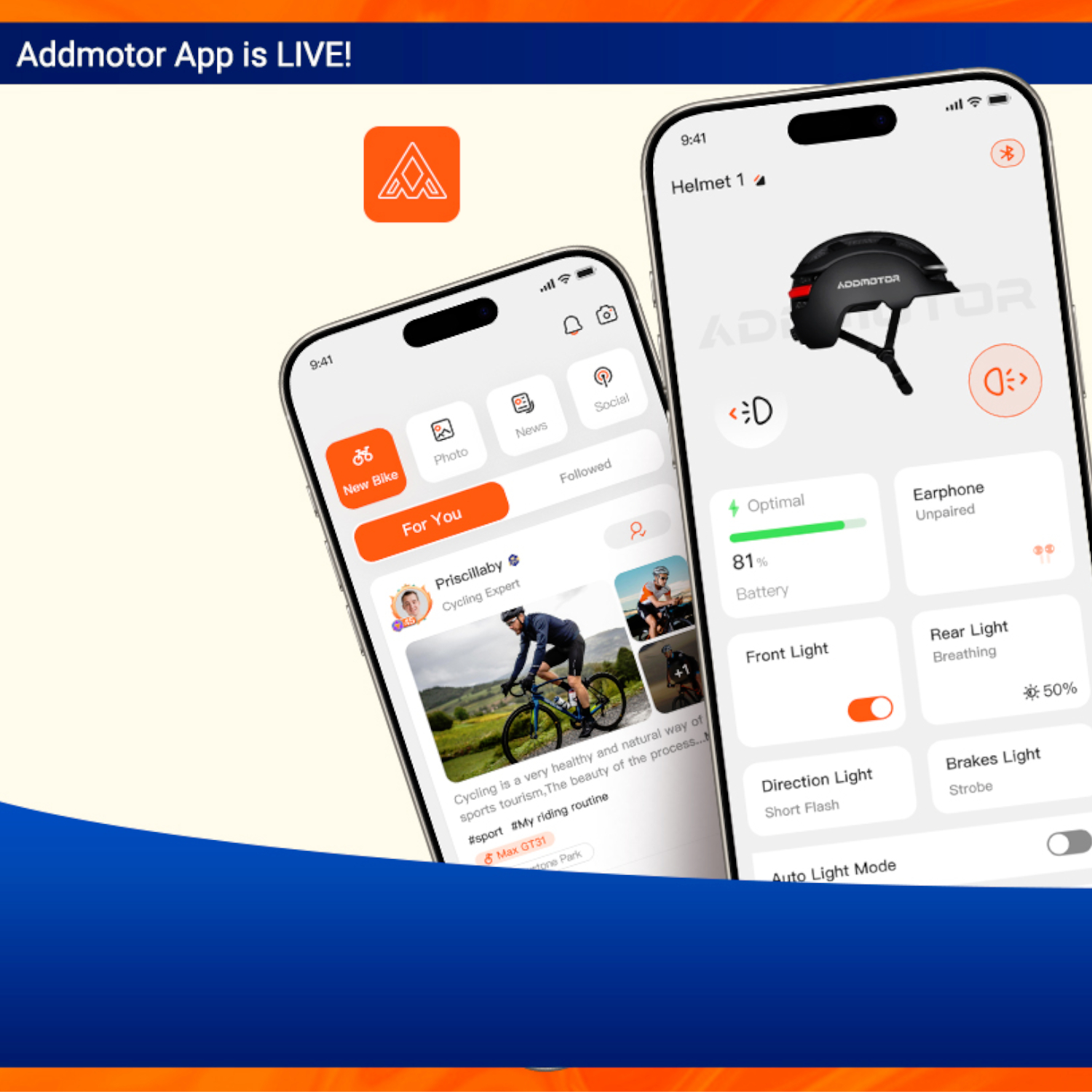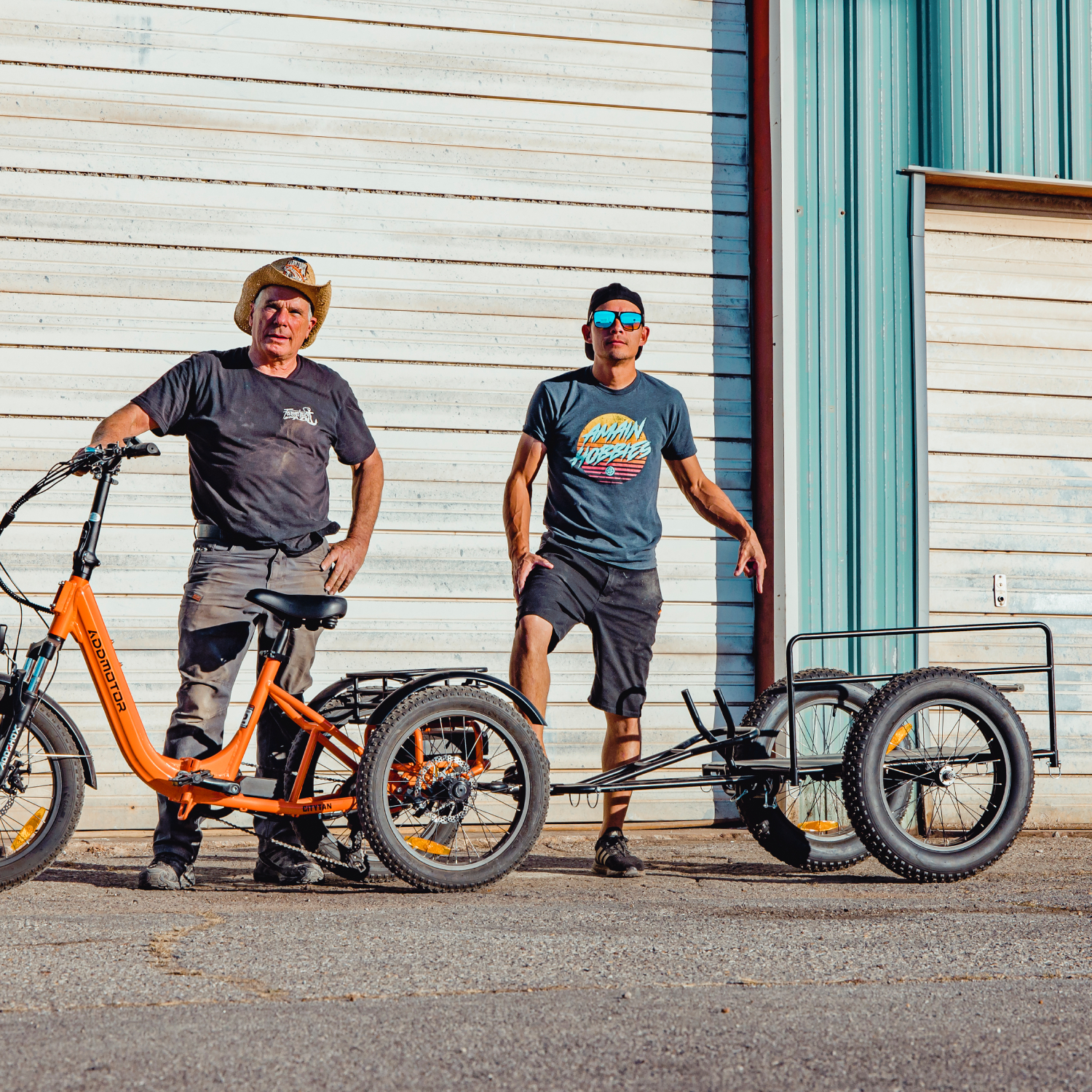How Do Electric Bike Brakes Work?
By Addmotor | 27 December 2022 | 1 Comments
In cycling, brakes are crucial, especially for safety. An electric bike's brakes are essential to its operation. A lever fastened to the handlebar engages the braking system. The cable puts pressure on the brake caliper's pistons after the rider pushes this lever. The pistons then force the brake pad into the brake rotor, where friction is produced. This friction generates the force required to stop the adult electric bike.
Let us understand more about the brakes in this article.
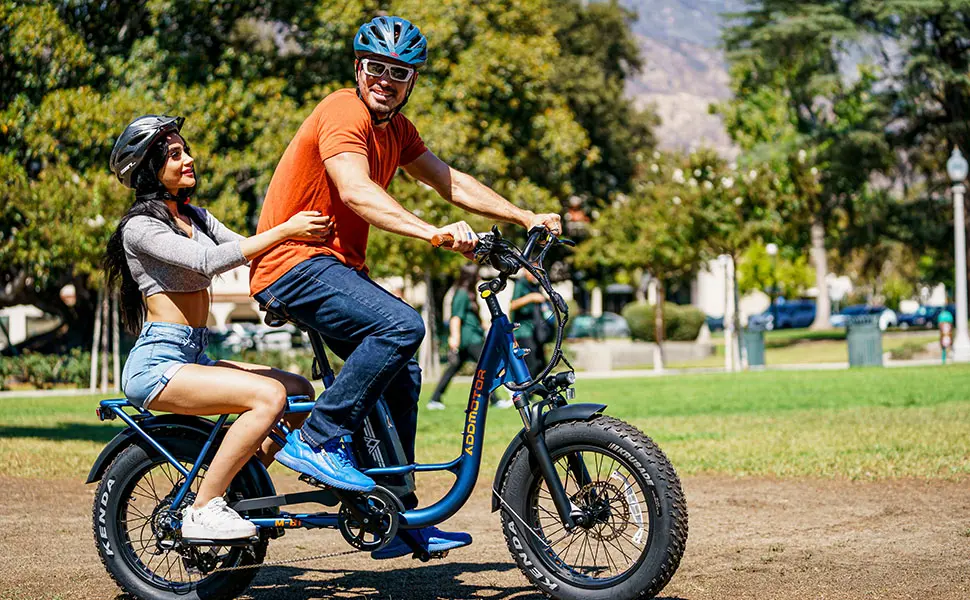
M-81 cargo electric bike for adults, with EB 2.0 hydraulic disc brake, best for delivery and two riders!
Components That Form An Ebike Braking System
Lever
Levers are the handlebar-mounted devices that are used to operate brakes most frequently. It is where the braking force generates when pushed in the direction of the bar. Simple levers give little extra functionality, although high-end brakes can be adjusted for length, angle, and draw strength.
Cable
The cable runs from your handlebar to your wheels and joins the lever to the caliper. The great majority of electric bikes use mechanical disc brakes. Cables for hydraulic disc brakes are filled with fluid, while those for mechanical disc brakes are filled with air.
Caliper
The brake pad and the pistons are housed centrally in the caliper. The brake pad will be forced into the braking rotor by the moving pistons when the lever is pulled. In addition to applying friction to the brake rotor and absorbing heat when rubbed against it, brake pads slow down electric bicycle.
Rotor Brake
The braking rotor, a substantial metal disc, is housed in the wheel hub and binds everything together. The rest of the wheel finds it challenging to spin when the brake pad is pressed against the rotating brake rotor, slowing it through friction. You will slow down more rapidly since a larger brake rotor generates more friction.
How Do Ebike Brakes Work?
Now that you have a fundamental understanding of every part of an eBike let's talk about how the brakes function.
When the brake lever is lifted, the connecting cable presses on the brake caliper pistons. The pistons join the brake rotor to a spinning wheel hub, which uses frictional power to drive the brake pad attached to the caliper into the brake rotor. The brake pad is forced harder into the braking rotor when you apply more effort to the brake levers, increasing the frictional force.
The amount of energy and momentum your wheel can hold and release as heat will depend on the amount of frictional force applied to the wheel hub. More power can be used for the brakes without endangering the rotor, brake pad, or other brake system components because of larger brake rotors' increased surface area for evenly dispersing heat.
How To Fix And Maintain Your Ebike Brakes
1. Clean the braking rotor
Using a wet washcloth or towel, wipe the brake rotors of bicycles to remove any substantial debris lodged there and ensure that nothing prevents the brake pad from making contact with the brake rotor.
Change your rotor immediately if you discover any noticeable fractures, gouges, or missing parts.
2. Make sure your brake pads are clean
When you pull the lever, your brake pad will produce less friction to the brake rotor; the wetter and oilier it is, making it more slippery. Always use isopropyl alcohol or solvents explicitly designed for cleaning brake pads.
3. Check to see if your brake calipers are aligned
Your brake caliper may become misaligned over time, particularly after collisions. When this occurs, you'll experience more drag because your brake calipers won't effectively apply the brake pads to the wheels, which will prolong your stopping distance and may harm the brake caliper.
4. Tighten all additional brake bolts
If your brake caliper is in the center but is still noisy or squeaky, check to see if your rotor and brake pads are clean. A loose bolt on your brake system is probably to blame if the noise continues. Check that all the nuts, screws, and other brake system parts are properly attached and tightened.
5. Always check your cables
Depending on how often you ride, you should inspect and maintain your brake cables every one to two years. When you pull the levers on mechanical disc brakes, you must ensure the cables are secured, properly sealed, and subjected to the necessary pressure. For best riding performance, hydraulic disc brakes need to have their fluid changed and drained every one to two years.
Conclusion
One of your electric bicycle's most important safety features is its brakes. Even a minor problem with your brakes may be quickly remedied. Still, if you allow it to get worse, your braking system may suffer permanent harm, and it might even compromise the structural integrity of your e-bike. Therefore, regularly inspect, tune-up, and clean your brakes, especially if you have performance concerns.
Let us understand more about the brakes in this article.

M-81 cargo electric bike for adults, with EB 2.0 hydraulic disc brake, best for delivery and two riders!
Components That Form An Ebike Braking System
Lever
Levers are the handlebar-mounted devices that are used to operate brakes most frequently. It is where the braking force generates when pushed in the direction of the bar. Simple levers give little extra functionality, although high-end brakes can be adjusted for length, angle, and draw strength.
Cable
The cable runs from your handlebar to your wheels and joins the lever to the caliper. The great majority of electric bikes use mechanical disc brakes. Cables for hydraulic disc brakes are filled with fluid, while those for mechanical disc brakes are filled with air.
Caliper
The brake pad and the pistons are housed centrally in the caliper. The brake pad will be forced into the braking rotor by the moving pistons when the lever is pulled. In addition to applying friction to the brake rotor and absorbing heat when rubbed against it, brake pads slow down electric bicycle.
Rotor Brake
The braking rotor, a substantial metal disc, is housed in the wheel hub and binds everything together. The rest of the wheel finds it challenging to spin when the brake pad is pressed against the rotating brake rotor, slowing it through friction. You will slow down more rapidly since a larger brake rotor generates more friction.
How Do Ebike Brakes Work?
Now that you have a fundamental understanding of every part of an eBike let's talk about how the brakes function.
When the brake lever is lifted, the connecting cable presses on the brake caliper pistons. The pistons join the brake rotor to a spinning wheel hub, which uses frictional power to drive the brake pad attached to the caliper into the brake rotor. The brake pad is forced harder into the braking rotor when you apply more effort to the brake levers, increasing the frictional force.
The amount of energy and momentum your wheel can hold and release as heat will depend on the amount of frictional force applied to the wheel hub. More power can be used for the brakes without endangering the rotor, brake pad, or other brake system components because of larger brake rotors' increased surface area for evenly dispersing heat.
How To Fix And Maintain Your Ebike Brakes
1. Clean the braking rotor
Using a wet washcloth or towel, wipe the brake rotors of bicycles to remove any substantial debris lodged there and ensure that nothing prevents the brake pad from making contact with the brake rotor.
Change your rotor immediately if you discover any noticeable fractures, gouges, or missing parts.
2. Make sure your brake pads are clean
When you pull the lever, your brake pad will produce less friction to the brake rotor; the wetter and oilier it is, making it more slippery. Always use isopropyl alcohol or solvents explicitly designed for cleaning brake pads.
3. Check to see if your brake calipers are aligned
Your brake caliper may become misaligned over time, particularly after collisions. When this occurs, you'll experience more drag because your brake calipers won't effectively apply the brake pads to the wheels, which will prolong your stopping distance and may harm the brake caliper.
4. Tighten all additional brake bolts
If your brake caliper is in the center but is still noisy or squeaky, check to see if your rotor and brake pads are clean. A loose bolt on your brake system is probably to blame if the noise continues. Check that all the nuts, screws, and other brake system parts are properly attached and tightened.
5. Always check your cables
Depending on how often you ride, you should inspect and maintain your brake cables every one to two years. When you pull the levers on mechanical disc brakes, you must ensure the cables are secured, properly sealed, and subjected to the necessary pressure. For best riding performance, hydraulic disc brakes need to have their fluid changed and drained every one to two years.
Conclusion
One of your electric bicycle's most important safety features is its brakes. Even a minor problem with your brakes may be quickly remedied. Still, if you allow it to get worse, your braking system may suffer permanent harm, and it might even compromise the structural integrity of your e-bike. Therefore, regularly inspect, tune-up, and clean your brakes, especially if you have performance concerns.
Recently Reviews
Read MoreLeave a Reply
Your email address will not be published.Required fields are marked. *
Latest Stories

